The Miniature Model Ships of August Crabtree
- Updated on:
- Written by Robert Vaughan
After a week-long visit to The Mariners Museum & Park in Newport News, Virginia, I am baffled that the names August & Winnifred Crabtree aren’t spoken of more in current ship modeling circles.
The Crabtree’s left behind a legacy of amazingly detailed ship models that nearly stagger the viewer at their beauty, detail, accuracy, and artistry. The story behind the models is equally fascinating.
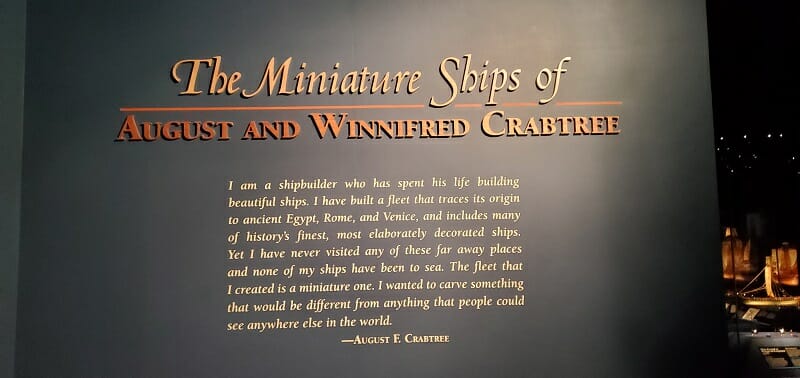
Who was August Crabtree?
August Crabtree was born in 1905 near the merchant shipyards and port of Portland, Oregon. He grew up surrounded by all things maritime, and developed a love for them.
At the time, circa 1920’s, the only ships models available were Admiralty models held in protection by museums. It became his goal to build plank-on-frame models that showed the evolution of sailing vessels, in all of their glory and detail.
This was long before the era of the Hobby shop where tools, plans, and materials were available readily. Most of his tools were adapted from existing ones, meant for larger work. He learned to select proper wood under tutelage of Shipwrights he endeavored to learn from.
Crabtree was truly sailing into unexplored seas in his modeling efforts, and he often made do with the primitive, or untried methods he created.
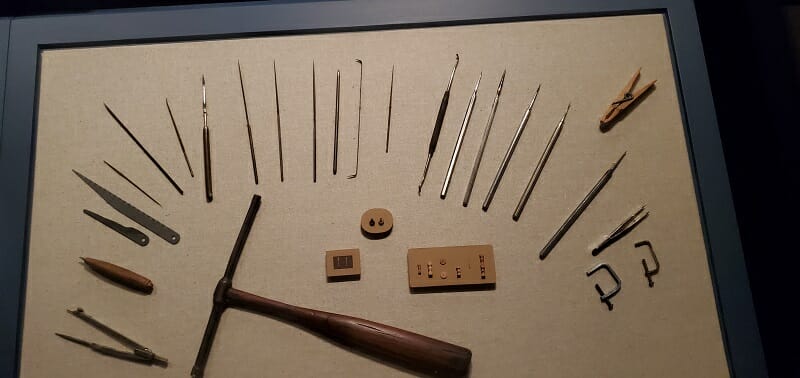
Crabtree went through several job changes during the years that he spent honing his skills and building his project. From actual working shipbuilding, learning how ships were constructed, to building ships models for the Hollywood industry.
But his collection of 16 ships and their development became his central occupation. He describes himself as, “Driven to complete the task,” and he thrived at completing it. He later opened a small museum in Florida to share what he and his wife, Winnifred had created.
Miniature Models of August Crabtree
Without telling their whole story, let’s look at the models they left behind. More information about their lives and legacy are superbly written in the book “The Miniature Ships of August & Winnifred Crabtree” by Vincent P. Scott. Available through the Mariners Museum in Newport News.
The collection, or “The Project” as Mr. Crabtree always referred to his lifes’ work, is an evolutionary voyage through the sailing ship and its development. An early work, (not on display currently) was of a primitive raft constructed of animal skin. Fully dedicated to accuracy, Crabtree trapped and skinned several mice to provide the clothing of the figure in his model!
Which brings up the subject of the human element in Crabtrees’ models. Observe all of them carefully. Much fine detail was put into the addition and carving of people manning his ships! Another skill demanding practice, forethought, and more practice! I know that you’ll find much character is put into the models by the figures! It will add to YOUR work as well. Further discussion of how to carve these tiny figures will come in a separate article here shortly!
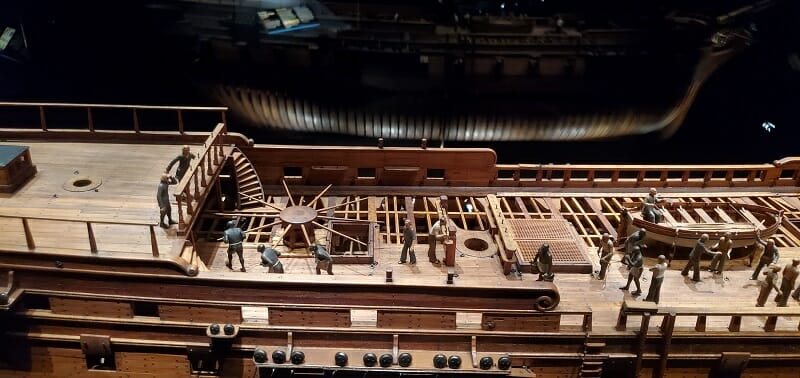
The Roman Merchant Ship
All of his models include figures, including Paul himself in the Roman Merchant ship (circa A.D. 50) manning the helm.Such a voyage is given in the Bible at Acts 27.
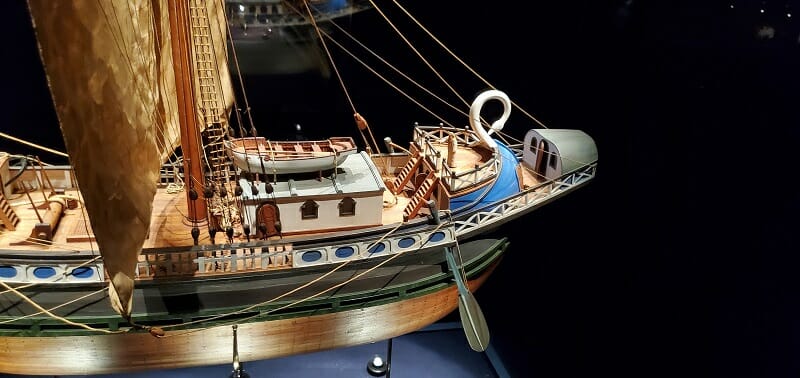
The British East Indiaman
The next ship model by the Crabtrees’ that we’ll feature is the British East Indiaman of 1805. The vessel as pictured here is a typical large EIC merchant ship. She is relatively heavily armed as protection against pirates and foreign enemies looking for plunder. The model itself is 49” in length, at ¼” being equal to 1′.
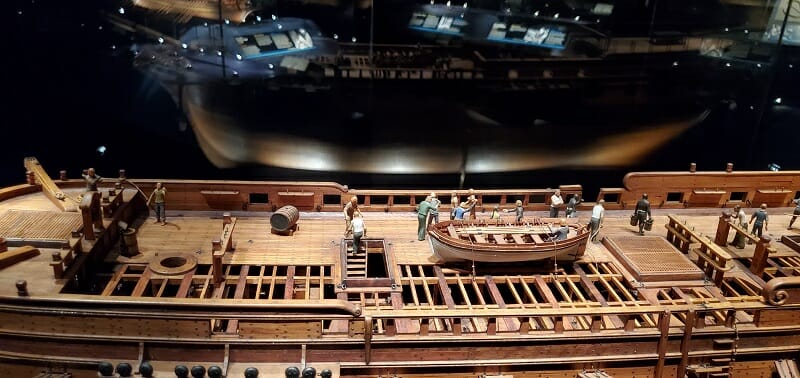
Armed Brig of 1810
This article will barely have space to describe the entire collection of 16 total vessels. But another highlight is the Armed Brig of 1810.

This is the most elaborate and complicated rigging in the collection of his ships.Interestingly, the sails, which were handcrafted by Mrs. Crabtree and her trusty sewing machine. They are made from drafting linen. The rigging is also made from linen, which is said to be the most durable natural fiber, and widely used throughout the 16 ships that Crabtree crafted. This model is also ⅜” = 1’ and a total of 49” in length. The details of human figures, and deck furniture are difficult to photograph as the model is in a protective case, but they are guaranteed to awe even the most skilled among us.
Key Takeaways
- August Crabtree, born near Portland's merchant shipyards in 1905, developed a passion for maritime history and ship modeling, leading him to create detailed miniature ships.
- Lacking contemporary hobby resources, he adapted tools and learned wood selection from shipwrights, eventually crafting a collection that showcases the evolution of sailing vessels.
- His collection includes 16 meticulously detailed models, among them a Roman Merchant Ship, a British East Indiaman from 1805, and an Armed Brig from 1810, all featuring intricate human figures and historically accurate details.
- Crabtree's models are displayed at The Mariners' Museum in Newport News, Virginia, reflecting his dedication to accuracy and detail in ship modeling.
Visiting the Mariners Museum and Park in Newport Virginia
A personal visit to the Mariners Museum & Park in Newport News, Virginia is most certainly worthwhile for any modeler or fan of history.
Their website includes much more information on the Crabtree collection as well as so much more of American maritime interest. The Library is the most amazing collection of maritime literature, ships plans, and other materials that you will find anywhere.
Visiting it is an Appointment Only arrangement. The Curators and Librarians will provide materials you are interested in by talking to them directly. The entire staff of this museum is highly professional, friendly to a fault, and willing to lead you anywhere you desire. I will be writing much more on subjects that I have pursued on-site at the museum. The collection of ship’s figureheads is awe-inspiring!

Learn The Art Of Building A Model Ship
Get started in wooden model ship building today









